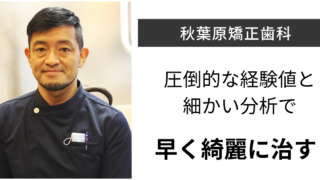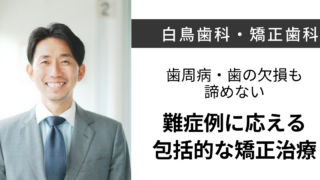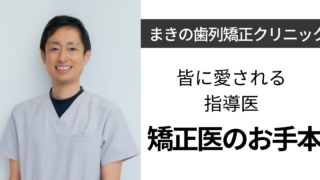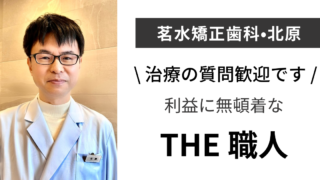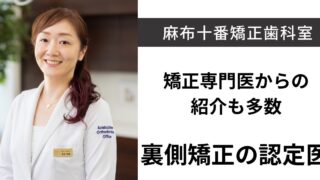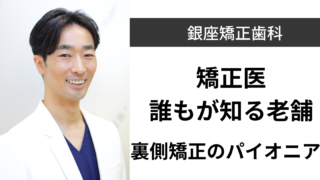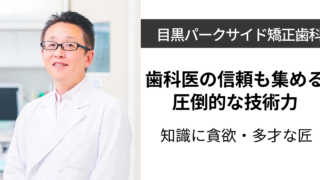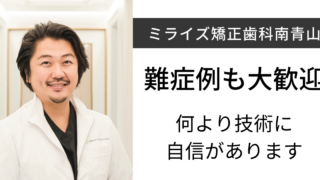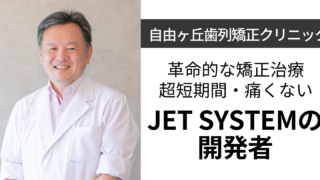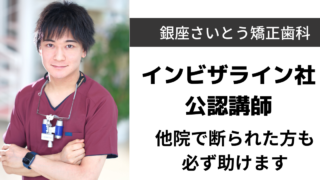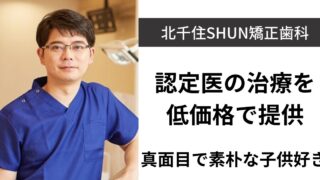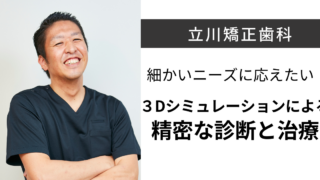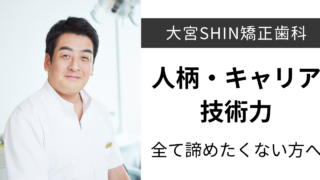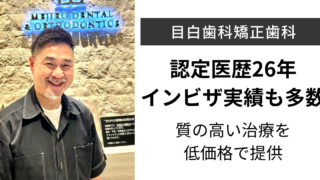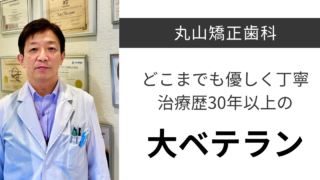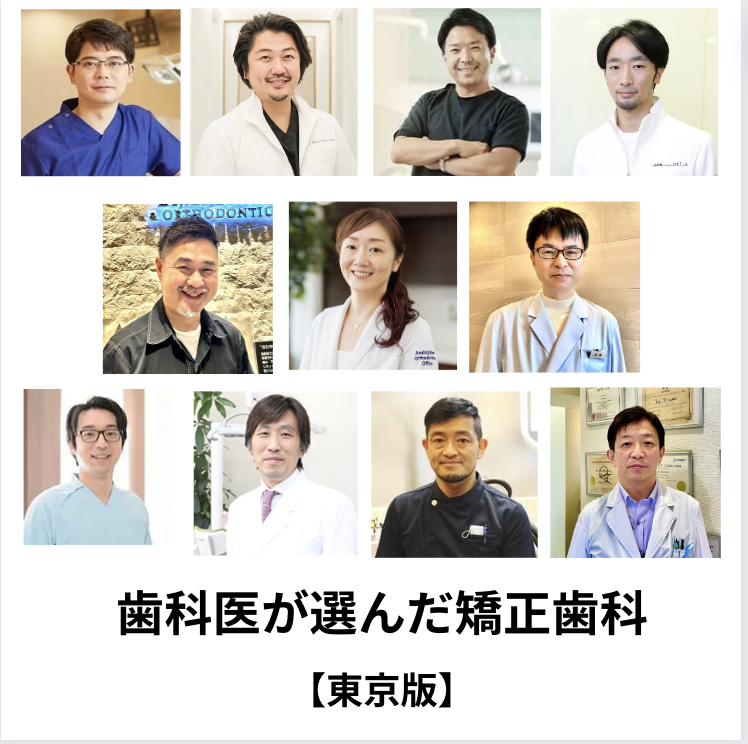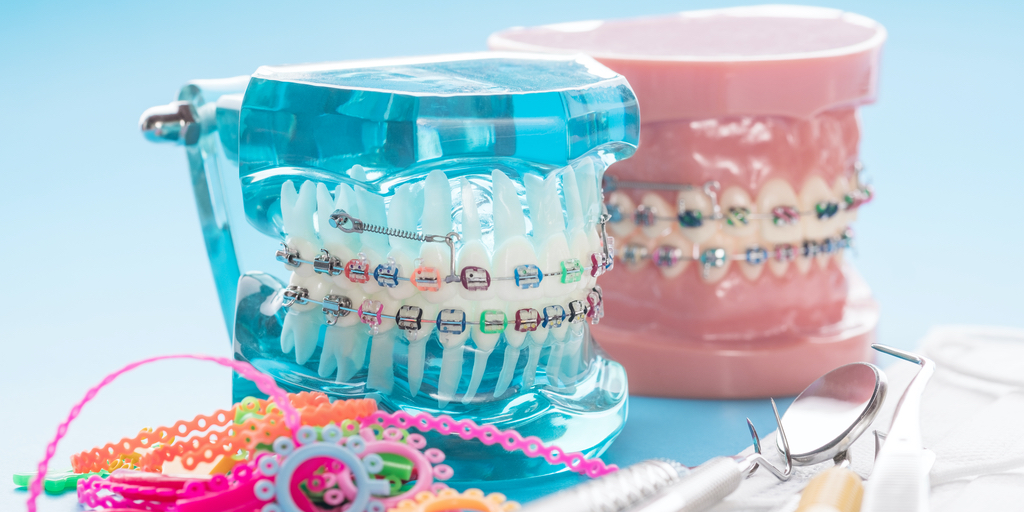
歯科医師が考える矯正歯科の選び方

この記事では、現役の歯科医師が矯正歯科の選び方のポイントをお話します。
矯正歯科治療は不正咬合(歯並びのずれ)の度合いにもよりますが、
基本的には長期になることが多いため、自分の理想の歯並びを手に入れるためには、
歯科医院や先生選びがとても重要になってきます。
もし家族が矯正をするなら、もし友達に相談されたらどういった医院を紹介するか、
真剣に考えまとめました。
記事を読んで探してみて、迷ったらラインで個別相談にも対応していますのでお気軽にお問い合わせ下さい。
執筆 歯科医師/ゆきこ
長崎大学歯学部卒業、現在は都内の矯正歯科・一般歯科クリニックに勤務
矯正歯科を選ぶときにチェックする9つのポイント
担当医制
矯正治療は最初の不正咬合(歯並びのずれ)も千差万別で、
その治療目標となるゴールも同じではありません。
院長が全ての患者さんを把握して統括をし、治療方針がドクター間でしっかり共有されている場合、
担当医制でないことが必ずしも悪いことではありません。
しかし、担当医制の方が一貫して細かいところまで配慮出来たり、患者さん1人1人に対する責任感も生まれやすいです。
矯正治療は基本的には毎月装置の調整等で歯科医院を受診しなければなりません。
毎月先生が変わるよりは同じ先生に診てもらった方が患者さん側も安心できるかつ、統一性は取れると考えられます。
矯正歯科を選ぶ際は、担当の先生がついてくれるかどうかチェックしてみて下さい。
セファログラム診断をしている
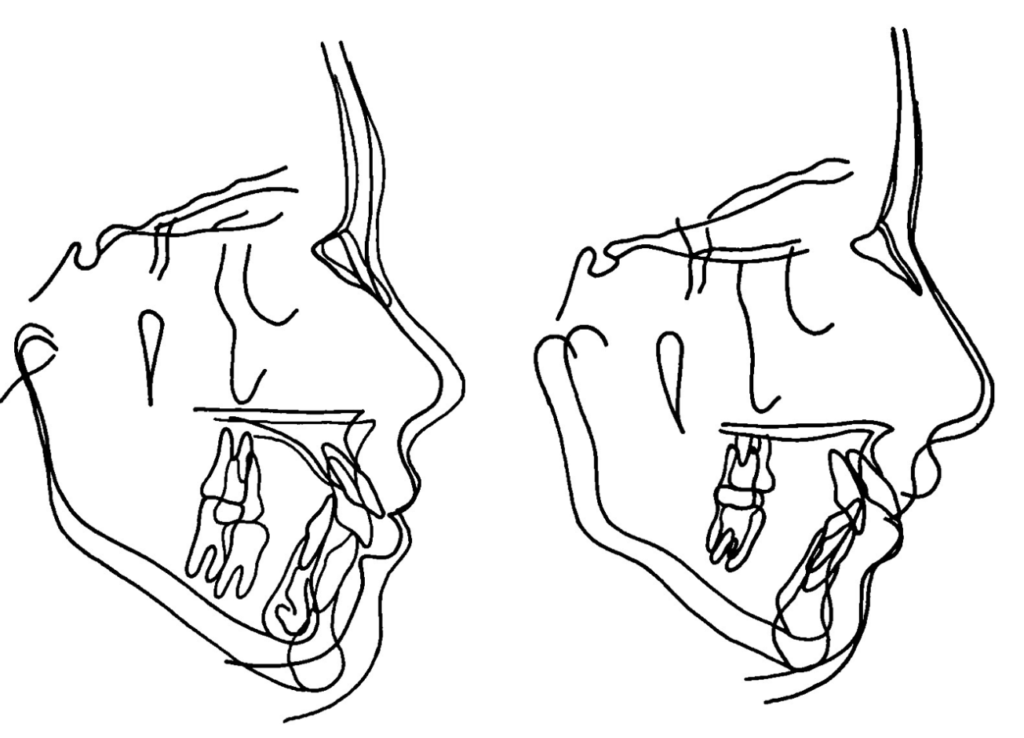
矯正治療を行う上で矯正歯科でのセファログラム診断は大切な診断です。
矯正専門の医院でセファロ分析をしていない医院はまずないとは思いますが、
一般歯科などで特にマウスピース矯正のみを扱っていたりする場合、きちんと分析していないこともあるかと思います。
セファログラム診断にはまずセファロ写真というレントゲン写真を撮影することから始まります。
セファロ写真は頭頸部のX線写真で
・照射筒から被写体までの距離
・被写体からフィルムまでの距離
が一定で規格化されており、
世界中のどこで撮影しても同じように撮影できるX線写真です。
このセファロ写真上に基準点や基準線を引き、正常値とどの程度離れているかを分析し、
不正咬合を評価及び診断するのがセファログラム診断です。
セファログラムの診断でわかること
・上下顎の位置関係
・歯のかみ合わせの状態
・歯の傾き
・顎の傾き
・Eラインの状態
などを診断をすることによって、より正確な矯正治療計画を立案することが可能になり、
術前術後の重ね合わせをすることで矯正治療による結果を鑑みることが出来ます。
日本矯正歯科学会認定医取得歴Or同等に矯正専門で学んだ経歴
矯正の認定医等の資格には主に以下のものがあります。
【日本矯正歯科学会認定医】
1990年に矯正医療の技術向上を目指して設けられた制度です。
日本矯正歯科学会認定医になるには矯正の専門機関での研修が義務付けられており、数日のセミナーや会費だけで得られる資格ではありません。
現状では日本矯正歯科学会が、日本の矯正界で最も権威ある学会と言われています。
認定医の基準は以下の通りです。
①5年以上日本矯正歯科学会の会員であること
↑これは会費を払えばだれでもクリアできます。
②2年以上大学の矯正歯科教室において研修した後、学会の指導医の下でさらに3年以上矯正歯科に専門的に従事すること
↑大学卒業後に一度矯正以外の道で臨床に出てしまうと、時間が経った後わざわざこれを行うのが難しいため、もともと矯正専門でなかった人はこの条件が原因で諦める人が多いと思います。
③学会誌に論文を掲載すること
④所定の試験に合格すること
↑表側矯正の症例を提出して口頭試問が行われます。
ちなみに継続して認定医の資格を得るためには5年ごとの更新が必要で、症例の提出や倫理規定遵守のチェックがあります。
初回取得までのハードルはやや高いですが更新に関しては技術面よりHP広告などの違反がないか等が重視されるようです。
そのため多忙にて更新していなくても取得歴があり、取得後に十分な臨床経験があれば良いかもしれません。
ちなみに、認定医の試験は表側矯正に限られており、インビザラインなどのマウスピース矯正や裏側(舌側)矯正のキャリアにはなり得ませんのでそこは注意が必要です。
【日本舌側矯正歯科学会認定医】
舌側(裏側)矯正治療についての高度な技術と知識の向上と維持を目的に、日本舌側矯正歯科学会によって2005年に制定された認定医制度です。認定医の基準は以下です。
①3年以上の学会在籍実績があること
②舌側矯正治療の症例を5症例以上学会に提出していること
③国内外の矯正歯科学会において舌側矯正治療による講演、展示の経験を2件以上有すること
日本矯正学会よりハードルは低いものの、舌側矯正は一般的に難易度が高いと言われており、この資格を取るのも粘り強く勉強する必要があります。
【日本成人矯正歯科学会認定医】
成長発育以後の矯正を対象とした矯正医療の技術の向上と維持を目的として導入された認定医制度です。認定医になるには5年以上の学会在籍実績があることがまず必要になります。その上で、
①学会認定医研修プログラムを修了しているか、学会の認める矯正歯科専門医療機関で2年以上在籍し、認定医申請資格試験に合格していること。
②学会の認める認定研修施設あるいは矯正歯科専門医療機関に5年以上在籍していると同等の矯正臨床経験を有すると認められるものは、学会の認定プログラムを修了し、認定医申請資格試験に合格していること。
この①か②のどちらかの項目が必要になります。
大学卒業後、矯正の大学院へ進まず一般治療を学んだ先生も後から取りやすい資格です。日本矯正歯科学会認定医と併用して取得する先生が多いです。
【インビザラインドクター(インビザライン公認ドクター)】
インビザラインは矯正治療の中でも透明なマウスピースを使用して歯を動かすため、その特殊性が高い矯正治療となります。それゆえ、高度な専門知識や技術が必要になります。
インビザラインでは
50症例以上をインビザラインSUPERドクター
100症例以上をGOLDドクター
500症例以上をPLATINUMドクター
として認定しています。
ちなみに、インビザラインを扱っているドクターのことをインビザドクターと呼ぶこともあるので、
インビザドクターと書いてあっても認定医と同義ではありません。
違いについては下記記事で詳しく解説しています。
関連:インビザライン治療の流れ
関連:インビザラインプロバイダー・クリニカルスピーカーとは?インビザドクターとの違いについて徹底解説!
矯正歯科の認定医についてまとめ
これらの認定医を持っていることは少なくとも一定期間矯正について勉強したという証であり、
良い矯正治療を提供できる一つの指標となります。
ただし、認定医だったとしても必ずしも優れた歯科医師だとは限りません。
認定医であっても多くの失敗症例を出す先生もいますし、
逆に認定医の資格がなくても技術も人間性も素晴らしい歯科医師も沢山います。
初診カウンセリングで実際に歯科医師と話してみて、
・説明がわかりやすく納得できるか
・質問にきちんと答えてくれるか
・同じような症例を綺麗に治しているか
などしっかり確認してみてください。
矯正歯科の臨床経験年数
臨床経験が長いと一般的には矯正治療の症例数が豊富であることが多いです。
症例数が多いと難症例にあたった経験や失敗経験も少なからずあり、経験値から診断力、判断力は高くなります。
口の中を触る際の技術等に関してはセンスもあり、一概に全て当てはまるわけではありませんが、
臨床経験の長さは一つの安心材料にはなると思います。
いろんな装置で治療が可能・選択肢が豊富
1つの矯正治療にこだわらず、メリット、デメリット、リスクを説明した上で多数の矯正治療計画案を出してくれる先生は良い先生であり、良い医院と言えます。
また、患者さんの主訴や悩みが歯科医師自身の矯正知識や技術では手に負えないと判断した場合に、適切な高度医療機関に紹介してくれる先生、医院も良いと言えるでしょう。
昨今はテクノロジーの発展から、手を出しやすいマウスピース矯正のみを行う医院も増えてきています。
簡単そうに見えますが、マウスピース矯正も高度な知識が必要な矯正治療です。
慣れていないドクターはマウスピース矯正では完璧に治せない症例もあります。
マウスピース矯正を始める際には基本のワイヤー矯正も出来ていざとなったらワイヤーへの移行も可能である先生にお願いする方が安心だと思います。
また、ワイヤー治療にも様々なブラケットの種類やワイヤーの種類があります。
古いやり方だけに固執するのではなく、新しい治療法などにも目を向け、症例に応じて最適な装置を選んでもらえる医院がよいのではないでしょうか。
説明がていねい
説明が丁寧か否かは、矯正歯科の選び方以前の問題として、歯科医師との信頼関係を築くものとして非常に重要なことです。
矯正治療は歯列不正の度合いにもよりますが、基本的には年単位の治療計画、治療終了後のメンテナンスも含めると確実に長いお付き合いになります。
長くお付き合いするためにも説明が丁寧な所で矯正治療を受けることをお勧めします。
医院によっては、実際の矯正治療で使用する装置の見本をはじめとするツールを使用して治療のコンサルティングをしてくれたり、矯正治療で歯がどのように動いていくのかのシミュレーションを見せてくれたりもします。
質問に対しての対応もしっかり確認してみましょう。
治療中は予想外のことや不安になることも多くあります。
そんなとき質問がしやすい先生であることは治療を続けていく上で非常に大事なポイントとなってきます。
デメリットやリスクの説明をしてくれる
矯正治療も医療行為であるがゆえに、必ず治療の過程、あるいは治療結果に対してメリット、デメリット、リスクがあります。
例えば単に矯正治療といっても使用する装置によって費用や治療期間、治療中気をつけなければならないことが異なります。
このようなことをしっかりと説明しない医院や先生の下では矯正治療を受けることはお勧めしません。また、矯正治療に対する同意書や契約書もしっかりと準備されている医院をお勧めします。
保証期間の説明
矯正治療を専門としている歯科医院や、矯正治療を提供している歯科医院では治療終了後、後戻りした場合の保証期間を設けているところがあります。
保証期間は一般的には数年以内です。
その適応条件としては保定装置(リテーナー)をしっかりと装着しているかどうか、定期検診に来ているかどうかなどがあります。
基本的に責任を持って治療しているクリニックは定期検診への来院やリテーナーの装着がきちんと出来ていた場合、無料追加治療の保証期間を設けていることが多いです。
CT撮影が可能
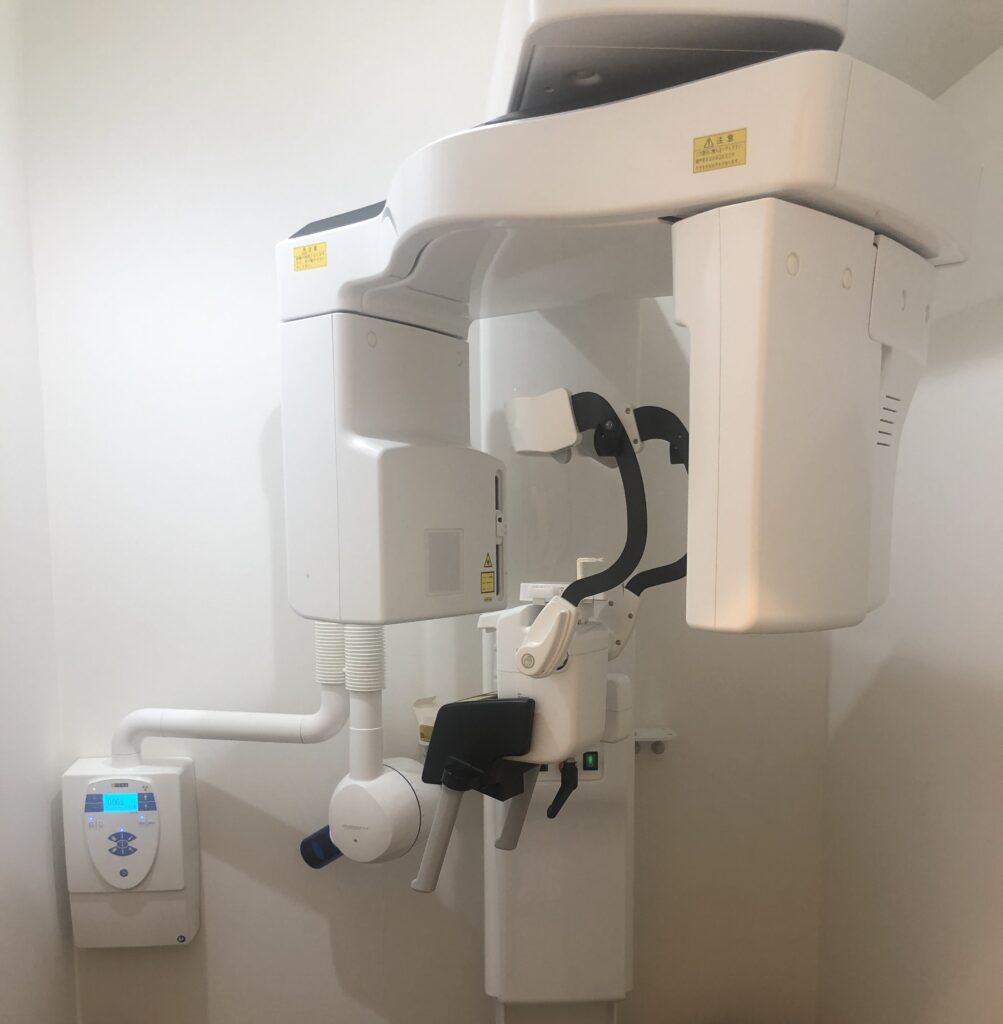
CTとは3次元的に歯や骨、歯肉などの断面を把握できるレントゲン写真です。
歯科でCTといえば、通常は親知らず抜歯の際やインプラント治療で使用するイメージが強いですが、矯正治療でもその能力は十分に発揮できます。
よってCTを保有し、矯正治療に利用している医院の方がより正確な診断が可能です。
矯正治療では以下のようにCTは利用されます。
①矯正治療で歯を動かす場所の骨の量がわかる
例えば第二大臼歯を遠心(後ろ側)に移動させたいときに、骨の幅と奥行きが十分にないとできません。従来のパノラマ断層写真やセファロ写真では2次元的な把握になってしまうため、十分な診断が下せません。
②歯根の状態が把握できる
CTでは歯根の状態を3次元的に把握できるため、歯根の肥大や曲がり、癒着等を非常に細かく認識することができます。これによって動かしやすい歯なのか否かの判断がつきます。
③親知らずや埋伏歯の把握
親知らずや埋伏歯の形や位置を3次元的に把握することによって、矯正治療前に抜歯するべきかどうかや開窓(歯茎を切って出てきやすくする治療)などをするべきかなどの判断がより正確にできます。
矯正歯科選びに迷った時は歯科医師に相談
いかがでしたか?矯正歯科の選び方に迷ったら、是非365dentistのLINE個別相談を利用してみて下さい☺️
10件以上迷って歯科医院を決めた方のおすすめの選び方の記事も参考にしてみてくださいね。

